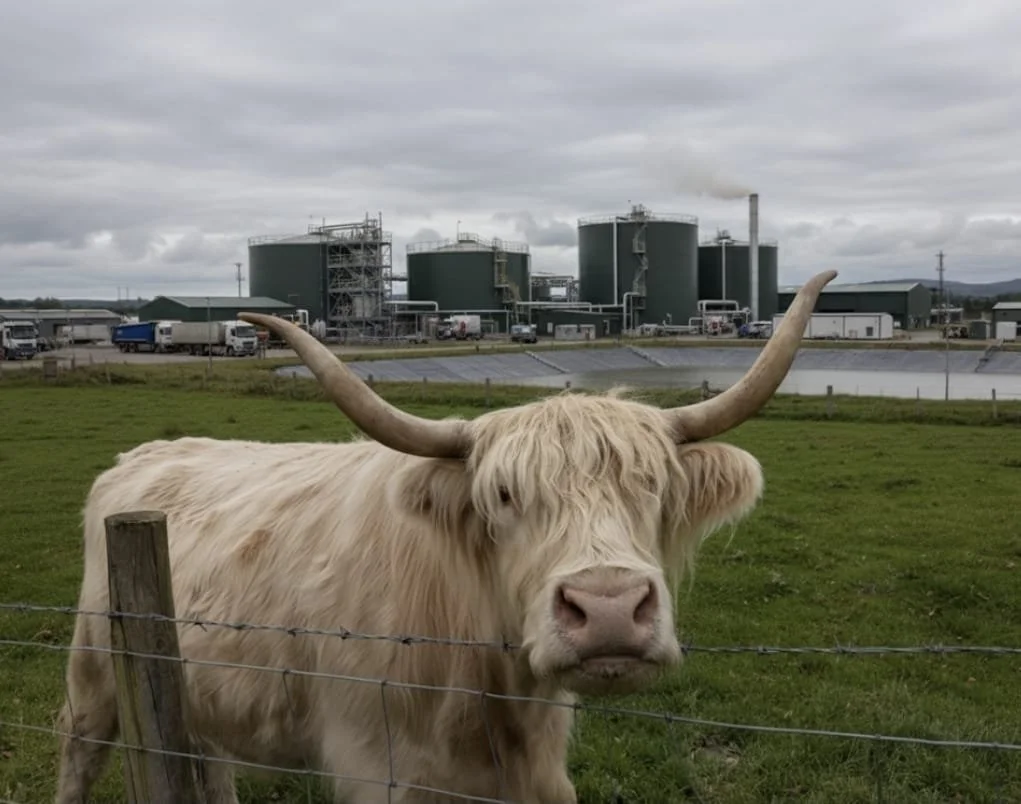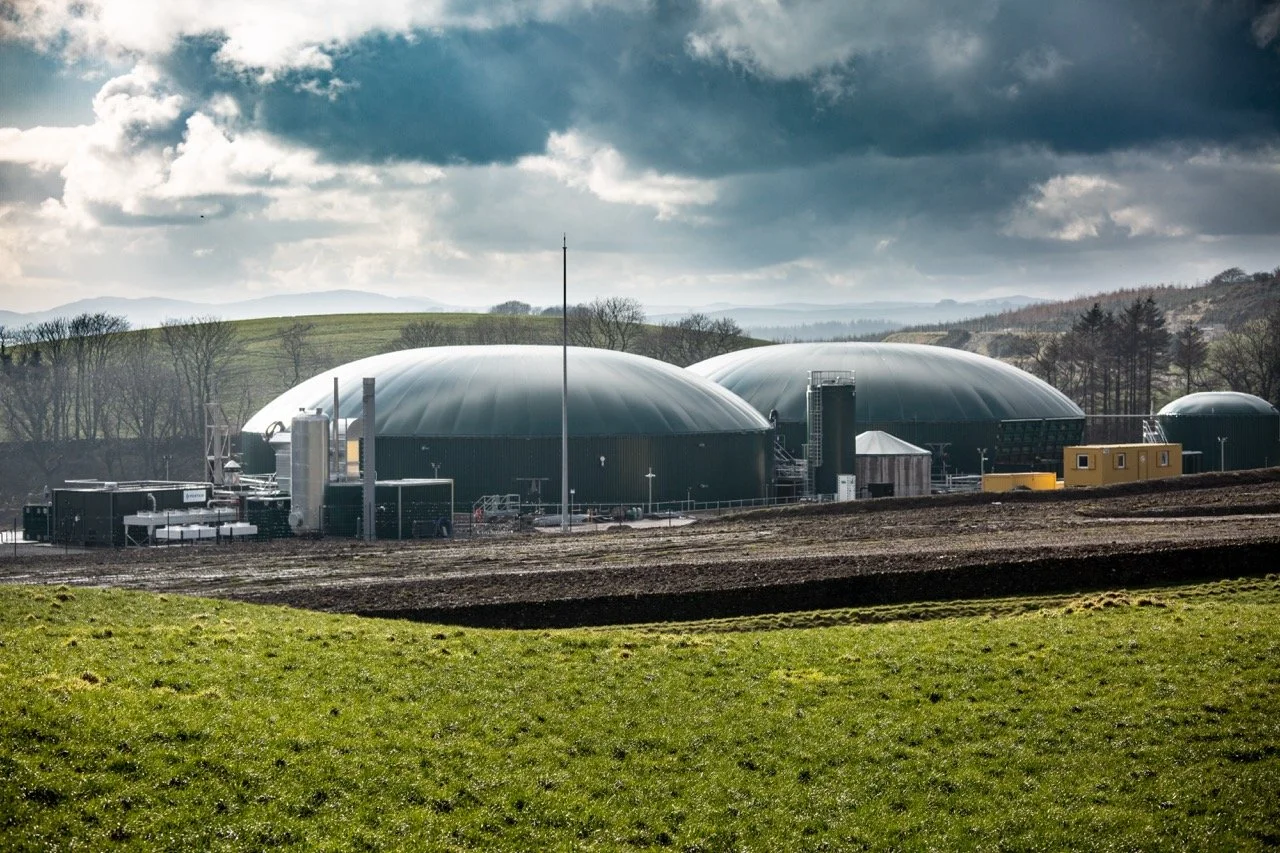Farming Feeding AD: How Agriculture Powers the Anaerobic Digestion Industry
The relationship between farming and anaerobic digestion is a symbiotic one. Agriculture doesn’t just supply the feedstock that powers AD plants, it also benefits directly from the digestate, renewable energy and carbon savings these systems provide.
In the UK and across Europe, the role of farming in the biogas sector has evolved from a feedstock provider to a central player in sustainable energy production and nutrient recycling creating a sustainable circular economy.
The Crucial Link Between Farming and Anaerobic Digestion
At its core, anaerobic digestion is a natural extension of agricultural activity. It takes organic materials such as manures, slurries, crop residues and purpose-grown energy crops, and converts them into biogas and digestate. This process mirrors nature’s own recycling systems but in a controlled and efficient environment.
| Feedstock Type | Example Sources | AD Benefit |
|---|---|---|
| Livestock manure & slurry | Dairy, beef, and pig farms | High methane potential; steady year-round supply |
| Crop residues | Maize, wheat straw, beet pulp | Adds dry matter and boosts gas yield |
| Energy crops | Maize silage, grass silage | Consistent, predictable feedstock for stable biogas production |
| Food and farm waste | Spoiled silage, fruit, vegetables | Reduces waste and diversifies feedstock mix |
These materials would otherwise decompose naturally, releasing greenhouse gases into the atmosphere. Instead, AD captures that energy in the form of biomethane, while producing a nutrient-rich digestate that can be spread on farmland as a renewable fertiliser.
The Benefits of Farm-Based AD Systems
For farmers, investing in AD can transform waste management into a revenue stream. It turns a potential environmental challenge by handling large volumes of manure and waste into a sustainable business opportunity.
1. Energy Independence and Diversification
AD enables farms to generate renewable electricity, heat, or biomethane for injection into the gas grid. This provides long-term financial stability and reduces exposure to volatile energy prices. Some farmers use the energy directly on site to power milking parlours, grain dryers, or farmhouses, reducing running costs.
2. Nutrient Recycling and Soil Health
Digestate from the AD process is rich in nitrogen, phosphorus, and potassium (NPK). Unlike raw slurry, these nutrients are more bioavailable to plants, reducing the need for chemical fertilisers and improving soil structure.
“We’re no longer buying fertiliser – we’re growing it.”, this is just one of many farmers now being able to say this.
3. Carbon Reduction and Net Zero Alignment
By capturing methane and displacing fossil fuels, farm-based AD plays a vital role in meeting UK net zero and renewable energy targets. The sector contributes to cutting emissions from both waste management and agriculture simultaneously.
4. Regulatory Compliance and Sustainability Credentials
AD helps farmers comply with tightening environmental regulations such as the Farming Rules for Water, which limit nutrient run-off and pollution. It also supports schemes like the Sustainable Farming Incentive (SFI) by demonstrating best practice in waste management and nutrient use.
Feeding AD: Choosing the Right Mix
A successful AD plant relies on the right balance of feedstock types, ensuring a stable digestion process and consistent biogas output. Typically a farm-based digester will operate with a mix of high-energy crops and readily available manures.
| Feedstock | Percentage by Weight | Contribution |
|---|---|---|
| Cattle slurry | 40% | Steady base load; maintains digester stability |
| Maize silage | 35% | High biogas yield; provides energy-rich content |
| Grass silage | 15% | Adds fibre; improves digestion consistency |
| Food waste or by-products | 10% | Enhances gas yield; offers waste reduction benefits |
Maintaining this balance helps avoid issues such as acidification or reduced methane output. Feedstock consistency, storage, and pre-treatment (such as maceration or pasteurisation) are also critical to ensure maximum gas production and process efficiency.
Challenges and Considerations for Farmers Entering AD
While AD presents clear opportunities, it also comes with challenges that require careful planning and expertise.
1. Feedstock Availability and Logistics
Sourcing, storing, and transporting feedstock efficiently is critical. The economics of AD are highly dependent on proximity and consistency of supply.
2. Capital Investment and Financing
Building an AD plant can require substantial upfront investment. However, funding options such as Power Purchase Agreements (PPAs), private investment, and government incentives (e.g., the Green Gas Support Scheme) are helping de-risk these projects.
3. Operational Expertise
Running a digester demands technical skill. Many farms partner with experienced operators or consultants, such as BioConsult, to ensure smooth operations, regulatory compliance, and long-term efficiency.
The Future of Farming as the Engine of the Biogas Economy
As the UK shifts towards decarbonising agriculture and energy, farming will remain central to the AD sector’s growth. The move toward carbon farming and renewable gas production aligns perfectly with the capabilities of the agricultural industry.
Emerging technologies, such as on-farm biomethane upgrading units and bio-CO₂ capture systems, are opening new opportunities for diversification and circular carbon solutions. In future, farms could become energy hubs, producing renewable gas, fertiliser, and carbon credits simultaneously.
Specialist Advice
Thinking about how AD could work on your farm? Speak to our experts for tailored advice on feedstock management, feasibility and project development. Whether you’re exploring your first on-farm digester or optimising an existing plant, our team can help.


